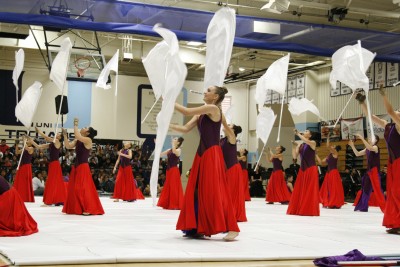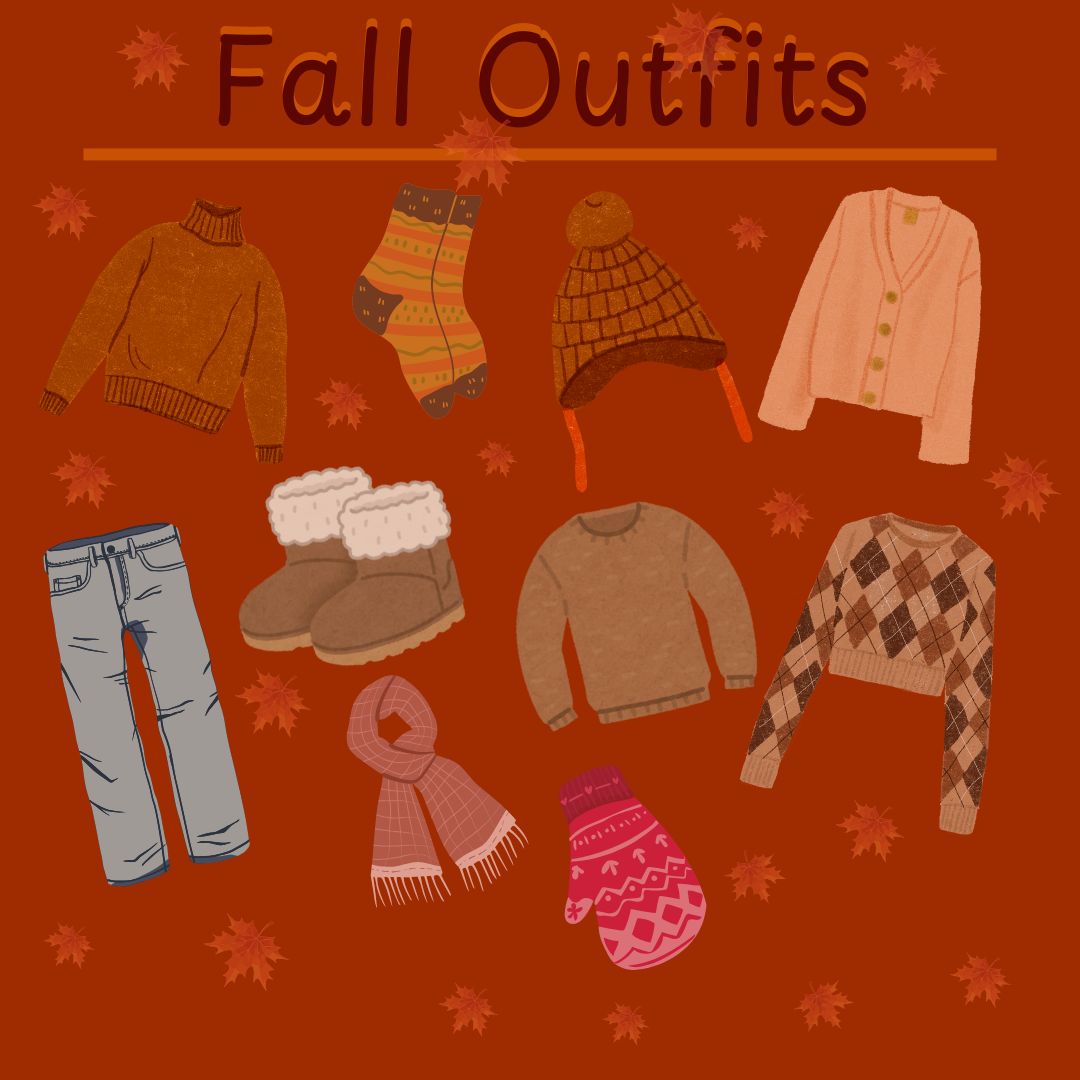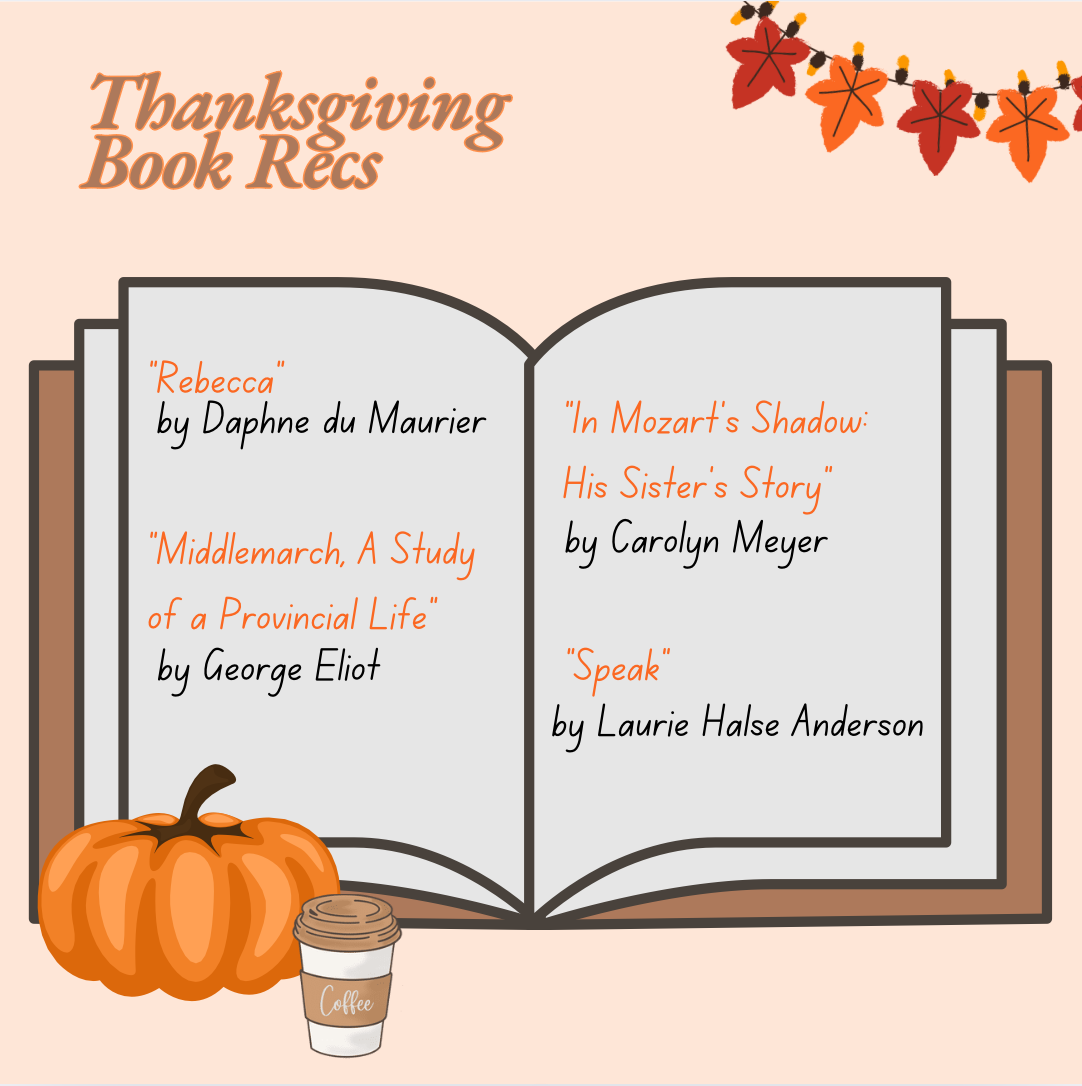
By DANIELLE BANG
Staff Writer
From afar, a color guard performance looks like strokes of colors all moving along the same current, like an Impressionist painting in motion. The bright colors of the flags and the uniforms enhance the movement of the figures dancing along to the rhythm of the music. Nobody can deny the beauty of color guard performances, but few understand the sheer work invested in their training.
Color guard is an unison group that dances and performs for its representative school. In fall, color guard members perform with marching band, like they did during the Homecoming football game. During spring and winter, however, color guard performs by itself. Practice is usually four times a week in fall, and three times a week in winter and spring. As it is a combination of dance and music, color guard performs for the assembly during Fine Arts Week; however, it gives its members sports credit instead of art credit.
The actual sport has a rich history. Color guard began in the United States during the early days of the Civil War when bands would accompany soldiers into battlefield, uplifting the spirit of the harsh war and to keep soldiers in beat. The band requested that a person hold the American flag, and that person became the first color guard in history. However, this job only required four simple steps: left, right, front and back.
As time passed, color guard became increasingly more associated to band. Color guard participated in high school ceremonies and local parades. Color guard movements were very limited — until Peggy Twiggs invented the “Peggy Spin.” Instead of just holding the flag at different angles, color guard members now spun the flag as a performance.
Later, Winter Guard was created, in which color guard performed indoors without the accompaniment of the band. Winter Guard International then organized such a creation into a system of competitions in which individuals of color guard were trained to use various props such as the flag, rifle and sabre.
Finally, high schools began color guard teams to be a part of their school activities, and color guard has become a vibrant part of a school’s culture since then.This is also true for UHS.
Each year, auditions are held for students who want to be a part of color guard. They must know basic moves such as how to spin the rifle or the flag with their hands. After becoming a part of color guard, they are given their brightly colored uniforms and proceed to learn moves and tricks such as staying coordinated with fellow members, jumping/moving gracefully and spinning (and catching!) their equipment at great heights.
Color guard members practice for hours every week, but the outcome makes the hard work worth the toil. “I like being a part of color guard because my individual practice contributes to how the entire performance looks,” said Lucy Yu (Jr.). “It’s cool to look at how color plays a part because usually in performances like these, the focus is in the movement of the dancer.”
“I dedicate most of my week to rehearsals and competitions, and through guard, I’ve learned about confidence, teamwork, performance and perseverance,” said Katherine Nguyen (Sr.).
UHS color guard: a historical point of view
March 25, 2016

0
Donate to Sword & Shield
$180
$1000
Contributed
Our Goal
Your donation will support the student journalists of University High School. Your contribution will allow us to purchase equipment and cover our annual website hosting costs.
More to Discover













